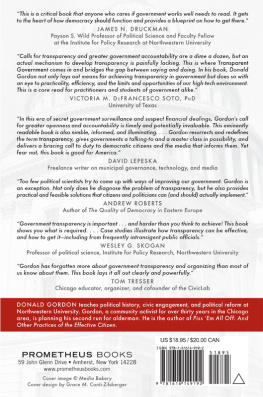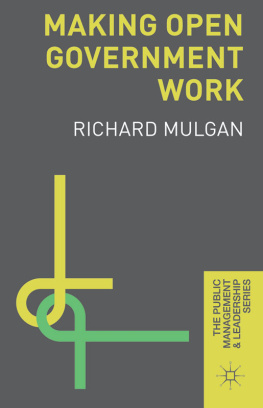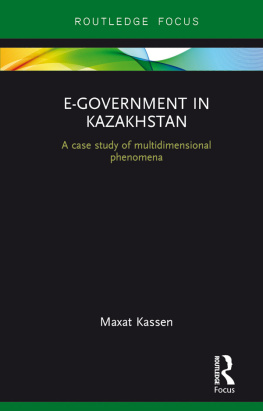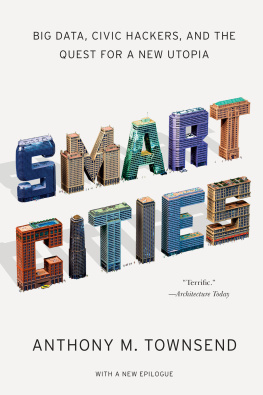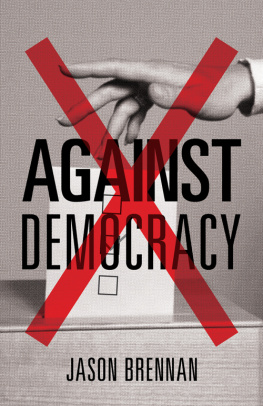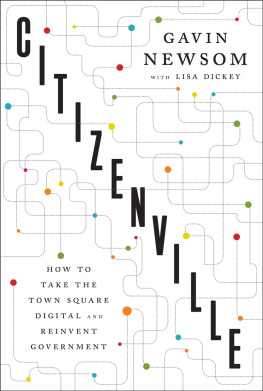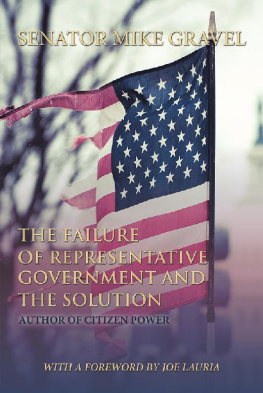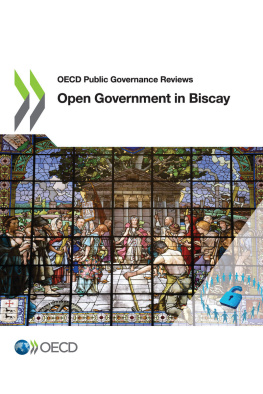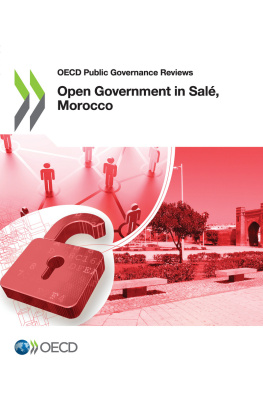Foreword
Don Tapscott
Author of Wikinomics and Grown Up Digital
It goes without saying that as we step into the future, governments face incredibly complex challenges. Sustaining societies and economies in the face of climate change, energy shortages, poverty, demographic shifts, and security will test the ingenuity of those who wish to see, do, and participate in the public good.
Even though its the twenty-first century, most governments still reflect industrial-age organizational thinking, based on the same command-and-control model as industrial-age enterprises. Todays bureaucracy and the industrial economy rose hand-in-hand. The economy needed roads, sewers, electrification, railways, and a sophisticated military. As government got bigger, and the revenue of government increased, it became necessary to build more elaborate procedures, structures, and controls, all run by new layers of professional managers. Nonpartisan hiring practices, pay scales, procedures for making appointments, financial systems, and audit processes were put in place. At the time, all of this was judged to be state of the art.
These bureaucracies operated like individual stovepipeswith information only flowing vertically and rarely between departments. During the last 40 years, governments, like corporations, applied computers to their work as each agency acquired and built data processing systems to meet their automation needs. The result is that old procedures, processes, and organizational forms were just encoded in software. Huge, unwieldy mainframe beasts not only cemented old ways of working, they required still greater levels of bureaucracy to plan, implement, operate, and control them. Despite best efforts, IT experts have largely failed to resolve the chaos of inconsistent databases, dueling spreadsheets, and other data anomalies that plague many government agencies.
This is not sustainable. Governments face a reality in which they are more and more dependent for authority on a network of powers and counter-influences of which they are just a part. Whether streamlining government service delivery or resolving complex global issues, governments are either actively seekingor can no longer resistbroader participation from citizens and a diverse array of other stakeholders. Just as the modern multinational corporation sources ideas, parts, and materials from a vast external network of customers, researchers, and suppliers, governments must hone their capacity to integrate skills and knowledge from multiple participants to meet expectations for a more responsive, resourceful, efficient, and accountable form of governance.
The first wave of digitally enabled e-government strategies delivered some important benefits. It made government information and services more accessible to citizens while creating administrative and operational efficiencies. But too many of these initiatives simply paved the cow pathsthat is, they focused on automating existing processes and moving existing government services online.
It is the next wave of innovation that presents a historic occasion to fundamentally redesign how government operates; how and what the public sector provides; and ultimately, how governments interact and engage with their citizens. It is truly a time when either government will play an active and positive role in its own transformation, or change will happen to it. The transformation process is at the same time exhilarating and painful, but the price of inaction is a lost opportunity for government to redefine its role in society and help launch a new era of participatory government.
The good news is that glimmers of this second wave of innovation are beginning to appear in capitals around the world. Knowledge, information, talent, and energy are being moved, shaped, and channeled in brand-new ways, inside, across, and outside of the boundaries of government. A growing number of governments understand the need to distribute power broadly and leverage innovation, knowledge, and value from the private sector and civil society.
As the excellent essays and case studies in this book reveal, there is a new kind of public sector organization emerging: open government. This is government that opens its doors to the world; co-innovates with everyone, especially citizens; shares resources that were previously closely guarded; harnesses the power of mass collaboration; drives transparency throughout its operations; and behaves not as an isolated department or jurisdiction, but as something new a truly integrated and networked organization. Today, its a radical notion, but perhaps its only as fantastic as the current version of government would seem to a feudal prince from the Middle Ages visiting us now. FDR and Winston Churchill wanted stronger government. Ronald Regan and Margaret Thatcher wanted less. Thanks to the Internet, we can now have it both ways. In the U.S. and many other jurisdictions, government is becoming a stronger part of the social ecosystem that binds individuals, communities, and businessesnot by absorbing new responsibilities or building additional layers of bureaucracy, but through its willingness to open up formerly closed processes to broader input and innovation. In other words, government becomes a platform for the creation of public value and social innovation. It provides resources, sets rules, and mediates disputes, but it allows citizens, nonprofits, and the private sector to do most of the heavy lifting.
All this is happening at a time when an entire generation of baby boomers will retire from government, creating an exodus of knowledge and skills that may never be replaced. In the United States, this demographic shift will see more than 60,000 civil service employees exit annually between now and 2015. Large departments, such as the Department of Defense, will lose 20 percent of their workforces. Many of these people hold executive, managerial, or key administrative positions replacing them will be nearly impossible.


